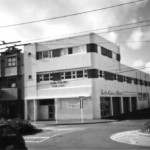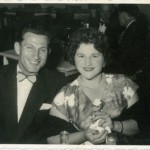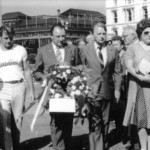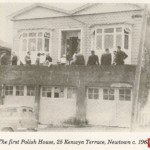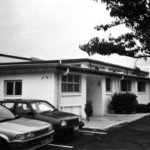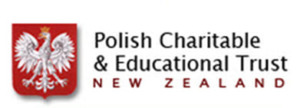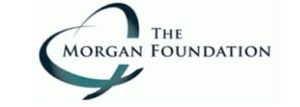Polish Refugees in New Zealand 1944-1951
Exhibitions
Polish House and Cultural Life
Michołaj Polaczuk: The Polish Association was formed on the lst March 1948. In its first years it had nearly 300 members. (p28)
The Beginnings
In 1947, the older children in the Polish Children’s Camp, Pahiatua, were coming to Wellington for work or secondary schooling. They began to get together on Sundays at church, and formed a Polish Youth group within the “Catholic Youth Movement”. By this time Polish ex-Servicemen had also arrived. They came to reunite to their family, to marry their fiancées, and begin a new life.
There was a general need among Polish immigrants, who found themselves in a new country, to absorb the change and settle down. The immigrants came through the war, many lost their families, suffered deprivation and felt insecure. They were looking for moral support, company, advice and sometimes help. This is why a Polish Association was of such paramount importance to them.
In Wellington, at that time, there was also a small organisation of Polish Jews, who were sympathetic towards the newly organised Polish Association; they assisted the fledgling association with advice, and transferred some of their correspondence and even a sum of money which they had collected from their membership fees. Several of them joined the Polish Association and were of enormous assistance to the executives in the early years.
The meeting in 1948 elected the first executive, with Captain Tadeusz Szczerba – Niefiedowicz, captain of the Polish ship Narvik , as president. Because most of the newcomers were under 25 and single, the captain was like a father to some, and along with other ex soldiers encouraged the Pahiatua children to join, observe and learn. At the same meeting membership fees were set, and a committee for writing up the rules of the Association were elected. (p28)
… The main objective of the Polish Association was to bring together, if possible, all the Poles who supported the sovereignty and democracy of Poland, and rejected, in solidarity with most of the Polish nation, the communist regime in Poland. The Association was always loyal to the Polish Government-in- Exile, with its seat in London. That Government stood as a reminder to the rest of the world that Poland was not free. Because of this, the Association had no contact with the Government of Poland, including the embassy in Wellington until 1991. (p28)
In 1951, the Polish Association was registered by New Zealand authorities. (p28)
The Sub-groups of the Association
To facilitate the work of the Association, eight different sections were created in the first year, 1948. These sections included: charity, national day celebrations, library, artistic, recreation, lectures, press and sports. Each section worked at the level of the ability of its members, and the Association acted as a kind of umbrella, guaranteeing assistance when the need arose and representing the different groups for official purposes. Later on new sections were created: church and secular choirs, dance groups (one of the more notable of which was the “Lublin” Song and Dance ensemble), church committee, sports teams, volleyball, basketball, soccer, chess club, indoor bowls, table tennis, bridge club, Polish Women’s League, youth club, Polish video club, Polish Access Radio group.
In 1950, the Association of Polish ex-Servicemen (SPK) was established in New Zealand as a branch of the main SPK in London. A bond of mutual respect and co-operation was formed between the two Associations. The SPK used the facilities provided by the Polish Association. (p30)
“The Polish News” – “Wiadomosci Polskie”
On March 1, 1950 the Association began to publish “The Polish News”, on average every two months. The “Polish News” is essential as it is the one and only publication that enables Poles to keep in touch. (p30)
The First Polish House: 25 Kenwyn Terrace, Newtown
A three bedroomed house to be used by all the sub-groups of the Association, was bought in 1951. Many Poles sacrificed a whole week’s wages to help pay for it. It was converted to a social hall and a library. It was here the Polish Saturday School for children was established. Later, schools were also opened in Auckland, Hamilton and New Plymouth. Frequent social activities were held allowing young people to get acquainted. For larger gatherings St. Anne’s Hall, Newtown was hired. (p30)
The Second Polish House: 257 Riddiford Street, Newtown
In time the house at 25 Kenwyn Terrace became too small for the ever increasing membership. The Building Committee was elected, to find and buy a larger building, but fund raising had to be delayed, because we were trying to buy the house at 43 Daniel Street, Newtown for use by the Polish Catholic Priests.
Three years later, we began again to raise funds for a new Polish House. This time we were successful: we sold 25 Kenwyn Terrace and raised money through donations, shares and loans, to buy the present property, at 257 Riddiford Street. It was a two storied concrete building, which earlier housed Denhard’s Bakery. It required quite a lot of alterations, such as the removal of the internal walls on the first floor to make room for a large hall with the stage, new wooden floor, new plumbing and electrical wiring and many other needed alterations. Most of these tasks were accomplished by voluntary labour as the finances of the Association were limited. Leon Domanski played a major part. Working together during the weekends towards the realisation of a common objective brought people together. New friendships were made, which survive until today. On the 13th June 1965 the new Polish House was officially opened. It was a day of joy and celebration . Distinguished guests included lay and church dignitaries.
The Polish House is now used by the entire Polish community, for every kind of occasion. It is kept in good condition by voluntary labour and fund-raising efforts of a dedicated group of people within the Association. (p31)
In 1991, as a result of the political changes Poland became a sovereign state again, our opposition to the Polish government was no longer necessary. On the 22nd December 1991 the Polish Government-in-Exile in London, returned the insignia (consisting of a copy of the Polish Constitution, the bible on which one swears, and the Presidential Stamp) to Poland, recognising the legitimacy of the new government. The Association made tentative moves to contact representatives of the Polish Government in Wellington. After a meeting of all the major Polish organisations in Wellington on March 27, 1991, a Polish Parliamentary Representation from Warsaw was received for the very first time at Polish House.
In May of the same year we had a visit from the Polish Minister of External Affairs, Professor Krzysztof Skubiszewski, together with the Polish Ambassador for Australia and New Zealand, as well as the local Charge d ‘Affaires with his deputy. A very significant occasion, as there was no contact with the Polish Embassy up to this date. (p32)
Living in Two Worlds, The Polish Community Wellington; p28, 30, 31,32
Voices
Photos
